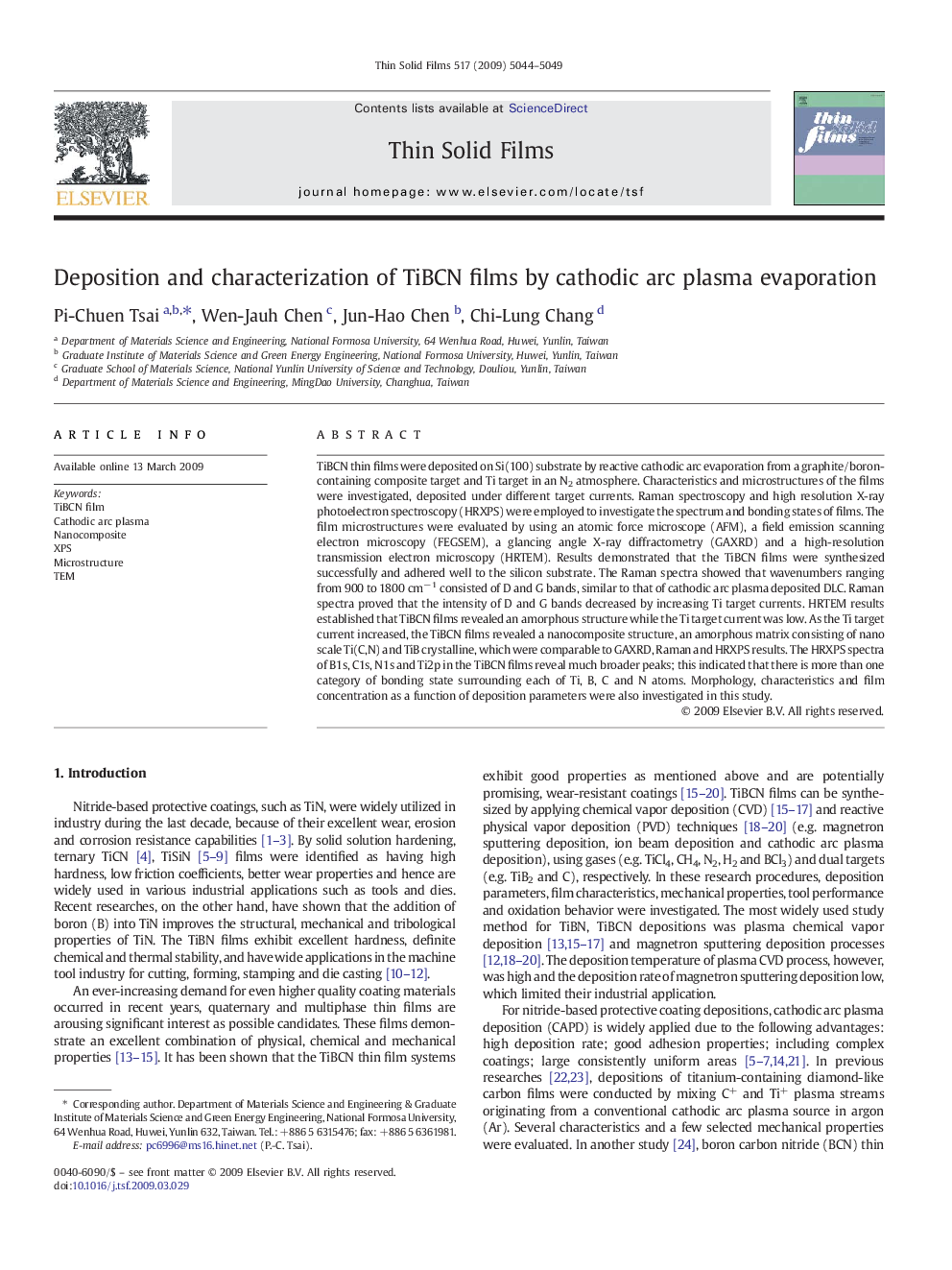| Article ID | Journal | Published Year | Pages | File Type |
|---|---|---|---|---|
| 1673233 | Thin Solid Films | 2009 | 6 Pages |
Abstract
TiBCN thin films were deposited on Si(100) substrate by reactive cathodic arc evaporation from a graphite/boron-containing composite target and Ti target in an N2 atmosphere. Characteristics and microstructures of the films were investigated, deposited under different target currents. Raman spectroscopy and high resolution X-ray photoelectron spectroscopy (HRXPS) were employed to investigate the spectrum and bonding states of films. The film microstructures were evaluated by using an atomic force microscope (AFM), a field emission scanning electron microscopy (FEGSEM), a glancing angle X-ray diffractometry (GAXRD) and a high-resolution transmission electron microscopy (HRTEM). Results demonstrated that the TiBCN films were synthesized successfully and adhered well to the silicon substrate. The Raman spectra showed that wavenumbers ranging from 900 to 1800 cmâ 1 consisted of D and G bands, similar to that of cathodic arc plasma deposited DLC. Raman spectra proved that the intensity of D and G bands decreased by increasing Ti target currents. HRTEM results established that TiBCN films revealed an amorphous structure while the Ti target current was low. As the Ti target current increased, the TiBCN films revealed a nanocomposite structure, an amorphous matrix consisting of nano scale Ti(C,N) and TiB crystalline, which were comparable to GAXRD, Raman and HRXPS results. The HRXPS spectra of B1s, C1s, N1s and Ti2p in the TiBCN films reveal much broader peaks; this indicated that there is more than one category of bonding state surrounding each of Ti, B, C and N atoms. Morphology, characteristics and film concentration as a function of deposition parameters were also investigated in this study.
Related Topics
Physical Sciences and Engineering
Materials Science
Nanotechnology
Authors
Pi-Chuen Tsai, Wen-Jauh Chen, Jun-Hao Chen, Chi-Lung Chang,
